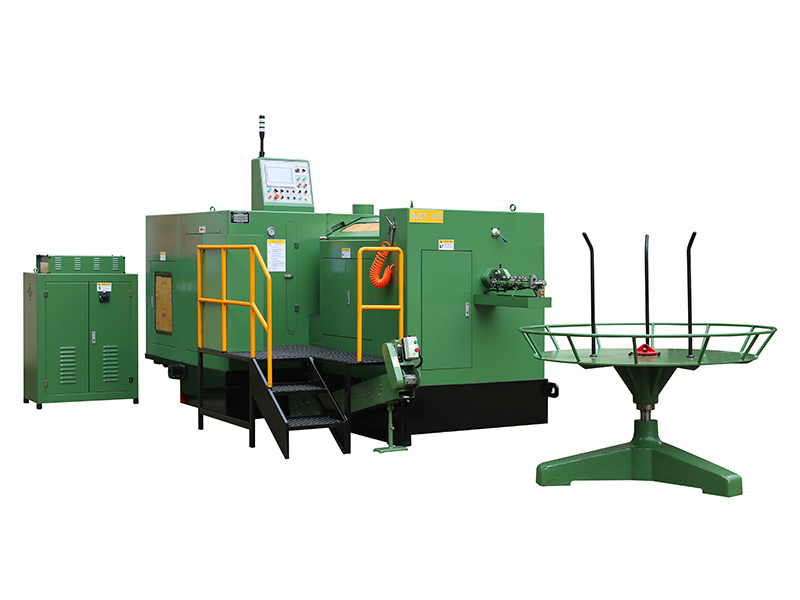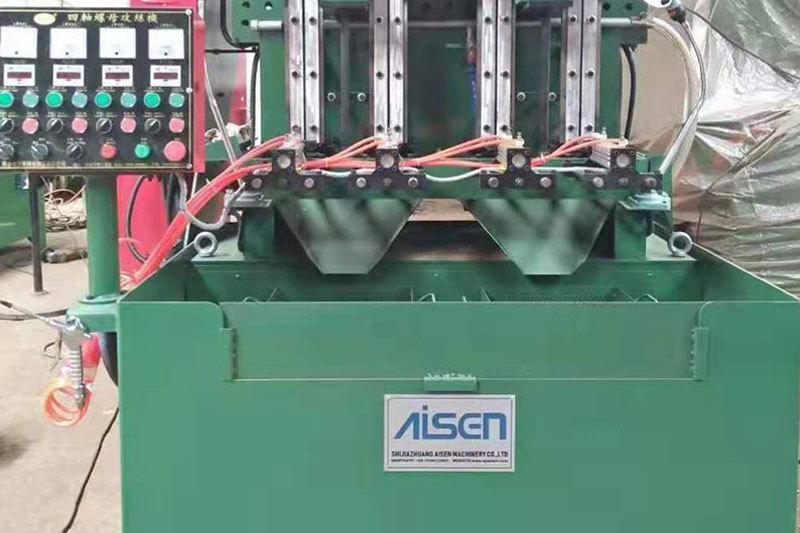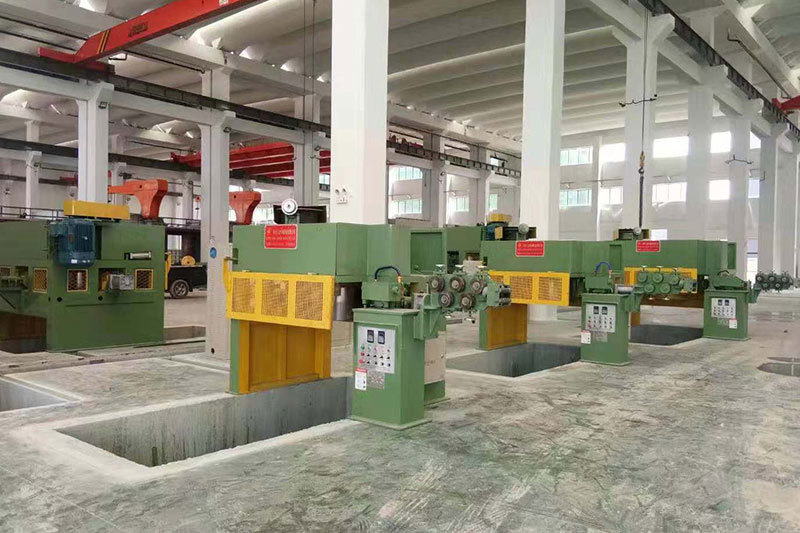Beyond Bolts: Unlocking the Versatility of Cold Forging Technology
Summary:
Beyond Bolts: Unlocking the Versatility of Cold Forging Technology
Table of Contents
Introduction to Cold Forging Technology
Understanding the Cold Forging Process
Key Advantages of Cold Forging
Beyond Fasteners: Applications of Cold Forging
Cold Forging in the Automotive Industry
Cold Forging in the Aerospace Sector
Cold Forging in Ele

Beyond Bolts: Unlocking the Versatility of Cold Forging Technology
Table of Contents
- Introduction to Cold Forging Technology
- Understanding the Cold Forging Process
- Key Advantages of Cold Forging
- Beyond Fasteners: Applications of Cold Forging
- Cold Forging in the Automotive Industry
- Cold Forging in the Aerospace Sector
- Cold Forging in Electronic Devices
- Cold Forging in Medical Devices
- Future Trends in Cold Forging Technology
- Challenges and Considerations in Cold Forging
- Common Questions About Cold Forging
- Conclusion
Introduction to Cold Forging Technology
Cold forging is an innovative **manufacturing process** that shapes metal at room temperature through the application of compressive forces. Unlike traditional methods, which often involve heating the metal, cold forging allows for enhanced mechanical properties and increased precision. This technique is widely recognized for its effectiveness in producing high-volume, intricate parts with minimal waste.
Understanding the Cold Forging Process
The **cold forging process** involves several steps to create quality components. Initially, the raw material, typically in the form of wire or bars, is cut to the desired length. The material is then machined in a forging die, where it is subjected to high pressure. This pressure deforms the metal, enabling it to take on the shape of the die.
Key stages of the cold forging process include:
1. Material Selection
Choosing the right material is crucial for ensuring the final product meets specific performance requirements. Common materials include low-carbon steel, stainless steel, and aluminum.
2. Die Design
The design of the forging die is fundamental. It must accurately reflect the final shape while allowing for potential springback of the metal.
3. Forging Operations
Depending on the desired outcome, various operations can be performed, including bending, upsetting, and extrusion. The choice of operation affects the final properties of the component.
4. Finishing Processes
After forging, components often require finishing processes such as machining, heat treatment, or surface treatment to achieve the required specifications.
Key Advantages of Cold Forging
Cold forging boasts numerous advantages over traditional manufacturing methods. Here are some of the most significant benefits:
1. Enhanced Material Properties
The cold forging process refines the grain structure of metals, resulting in improved strength and durability. This enhancement is crucial for components subjected to high stress and strain.
2. Precise Tolerances
Cold forging allows for tighter tolerances compared to machining, reducing the need for additional finishing processes and minimizing material waste.
3. High Production Rates
The efficiency of cold forging enables high-volume production, making it an ideal choice for manufacturers looking to scale their operations.
4. Reduced Waste and Environmental Impact
Cold forging generates significantly less waste than traditional methods, making it a more sustainable option for manufacturing.
5. Cost-Effectiveness
With lower material waste, reduced labor costs, and shorter cycle times, cold forging often results in lower overall production costs.
Beyond Fasteners: Applications of Cold Forging
While cold forging is well-known for producing fasteners like bolts and screws, its applications extend far beyond. This section explores some of the diverse sectors where cold forging is making a significant impact.
Cold Forging in the Automotive Industry
The automotive sector is one of the primary beneficiaries of cold forging technology. Components such as gears, crankshafts, and connecting rods are often manufactured using this method. The strength and reliability of cold-forged parts make them ideal for high-performance vehicles.
Cold Forging in the Aerospace Sector
Aerospace applications demand extreme precision and reliability. Cold forging meets these requirements effectively, producing critical components such as turbine blades, structural components, and fasteners that withstand harsh operating conditions.
Cold Forging in Electronic Devices
In the rapidly evolving electronics industry, cold forging is used to create connectors, housings, and heat sinks. The precision of cold forged parts ensures optimal functionality and performance in electronic applications.
Cold Forging in Medical Devices
The medical field relies on cold forging for producing high-quality instruments and devices, including surgical tools and implants. The process guarantees biocompatibility and precision, which are critical in medical applications.
Future Trends in Cold Forging Technology
As technology evolves, so does the cold forging industry. Emerging trends include:
1. Advanced Materials
The incorporation of advanced materials like titanium and high-strength alloys is becoming more common, pushing the boundaries of what cold forging can achieve.
2. Automation and Robotics
Automating cold forging processes increases efficiency and reduces the potential for human error, paving the way for more complex and intricate designs.
3. Additive Manufacturing Integration
The fusion of cold forging with additive manufacturing techniques is an exciting development that could revolutionize how components are designed and produced, allowing for innovative shapes and structures.
Challenges and Considerations in Cold Forging
While cold forging presents numerous advantages, it is not without its challenges. Manufacturers must navigate issues such as:
1. Initial Setup Costs
The design and production of forging dies can involve significant initial investments, which may pose a barrier for smaller manufacturers.
2. Material Limitations
Not all materials are suitable for cold forging, and selecting the right material is vital to achieving the desired results.
3. Process Control
Maintaining precise control over the forging process is crucial. Variations in temperature, pressure, and material properties can affect the final product's quality.
Common Questions About Cold Forging
1. What is the difference between cold forging and hot forging?
Cold forging occurs at room temperature, enhancing material properties, while hot forging involves heating the metal, which can lead to different characteristics.
2. What industries benefit the most from cold forging?
The automotive, aerospace, electronics, and medical industries are among the sectors that significantly benefit from cold forging technology.
3. Is cold forging suitable for all types of metals?
Cold forging is most effective with ductile metals such as steel, aluminum, and copper, but the suitability can vary based on the specific material and application.
4. Can cold forging be used for complex geometries?
Yes, cold forging can create complex geometries, but the design of the die must be carefully considered to ensure proper material flow.
5. How does cold forging impact production costs?
While the initial costs may be higher due to die production, cold forging generally results in lower production costs overall due to reduced waste and higher efficiency.
Conclusion
Cold forging technology represents a remarkable advancement in manufacturing, providing diverse applications that go beyond traditional fasteners. As we continue to explore and innovate within this field, the potential for cold forging is vast, shaping the future of various industries. By understanding the intricacies of this process and its far-reaching benefits, manufacturers can harness the power of cold forging to produce high-quality, efficient components that drive progress and innovation in manufacturing.
Latest News
AISEN Four axis nut tapping machine ready for shipment to Russia
Four axis nut tapping machine for DIN934 M8,M10 Standard hex nut is ready for shipping to Russia by land transportation.
AISEN machinery inverted wire drawing machine
We hope to cooperate with more customers for mutual development and benefits. You are welcome to contact us









